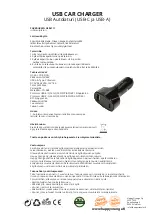
Traction Control System
The Traction Control System (TCS)
monitors how fast the wheels are
turning during acceleration. If one
drive wheel is turning faster than the
other, or both drive wheels are
turning faster than the non-driven
wheels, engine power is reduced to
increase traction.
The TCS uses the same wheel speed
sensor assemblies as the ABS. An
additional sensor measures steering
wheel angle, while another sensor
measures lateral acceleration
(cornering force).
The TCS uses the pulse frequencies
from the wheel speed sensors to
sense wheelspin. Information from
the steering wheel angle sensor and
the lateral acceleration sensor lets
the TCS control unit determine if the
car is accelerating in a straight line
or if it is cornering. The TCS can
then calculate how much wheelspin,
if any, to allow.
The NSX has a Drive-By-Wire
system that allows the Engine
Control Module (ECM) to directly
control the throttle valve on the
engine. If wheelspin is detected
during acceleration, the TCS control
unit signals the ECM to close the
throttle valve partially to reduce
engine power.
If wheel lockup is sensed during
deceleration (downshifting on a
slippery surface, for example), The
TCS control unit signals the ECM to
open the throttle valve slightly. This
raises engine speed and drive wheel
speed.
The control unit monitors the TCS
circuitry while driving. If it senses a
problem, it turns off the system and
illuminates the TCS indicator on the
instrument panel.
Technical Information
Содержание 1997 NSX
Страница 31: ...Safety Labels JUMP START EXPANSION TANK CAP Driver and Passenger Safety...
Страница 202: ...Lights On cars with removable roof NSX T On the standard model Except NSX T Maintenance INTERIOR INTERIOR TRUNK...
Страница 242: ...Fuses UNDER HOOD FUSE BOX Canadian Model CONTINUED Taking Care of the Unexpected...
Страница 243: ...Fuses ENGINE COMPARTMENT FUSE BOX INTERIOR FUSE BOX Canadian Model Taking Care of the Unexpected Spare Fuse...
Страница 251: ...Specifications Technical Information page 243 page 244...
















































